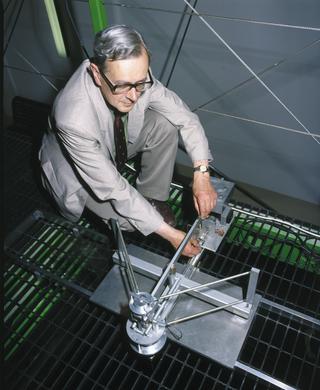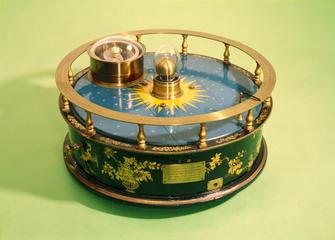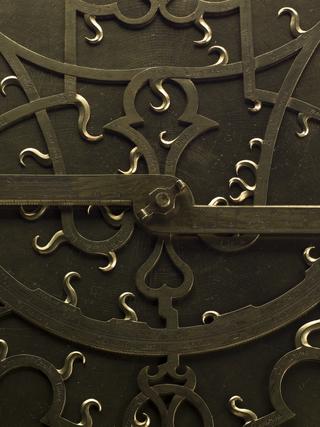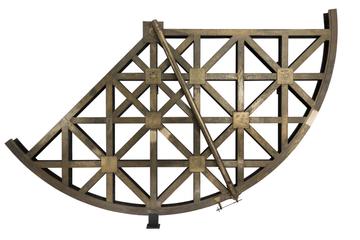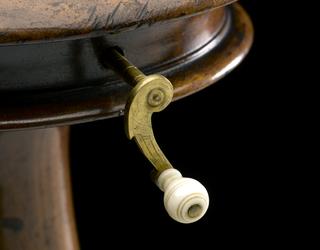
Italian celestial globe, 1636
- maker:
- Matthaus Greuter
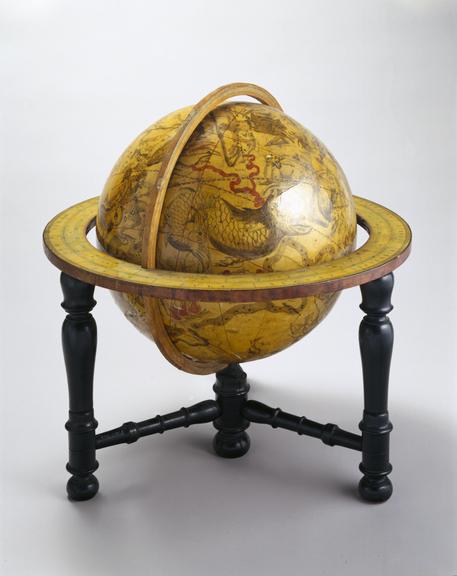
Celestial globe, by Matthaus Greuter, Rome, diameter 20 inches
Dated 1636, this printed celestial globe was made by Matthaus Greuter in Rome, Italy. On its triangular four-legged wooden stand the globe can be adjusted and rotated. The star map used for this globe is based on the new observations made by the Danish astronomer Tycho Brahe. The celestial globe is a three-dimensional model of the heavens on which the stars are plotted on the outside of a sphere. Originating in the Ancient World it was probably inspired by the discovery that the Earth was round. The globe could be used to teach and demonstrate various astronomical principles. Until recently most celestial globes were ornate with decorative figures obscuring the stars.
Details
- Category:
- Astronomy
- Object Number:
- 1891-8
- Materials:
- stand, wood and globe, plaster, paper, wood
- Measurements:
-
overall: 700 mm 700 mm, 12 kg
globe: 20 in.; 508 mm
- type:
- celestial globe
- credit:
- Pope, A.
